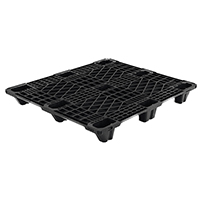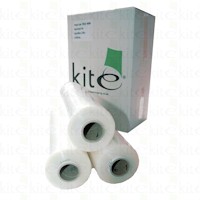Kite blog
Packaging For… Food – Part One
Friday's Industry Tips
Hi All,
Welcome back to our best practice blog post, designed to help various industry sectors with their specific needs in regards to packaging and protecting products. Each and every blog post we create is designed to help you as a business, and love to hear from businesses across the UK about how we can help them with their requirements. We are working through as many industry sectors as possible, but let us know if you think yours should be next in line! Last week we covered the fashion industry, a broad sector which can cover a number of different supply methods including distribution and point of sale. This means the packaging has two different key needs, and a similar approach is taken with today's chosen industry sector - the food industry.
The food industry is a growing sector in terms of Kite's expertise and we work particularly closely with our branch and online customers to ensure that all aspects of their packaging requirements are fulfilled. However, as with fashion food packaging does not begin and end with retail products. Distribution is a huge part of the supply chain and the requirement for packaging that improves logistics is vital, particularly in an industry that commonly delivers products daily to shops and eateries. In today's post we'll be taking a look at the best packaging for fulfilling the needs of the industry at back of store level, in order to improve distribution and ensure that food is delivered to sites in a hygienic way.
If you work in the food industry be it in a manufacturing or customer-facing role we'd love to hear from you, what would make your life easier in terms of packaging innovations? Send us your feedback and questions on Twitter - @kitepackaging

Food Industry Packaging Needs
In a similar way to the way the fashion industry operates, the food sector has a varied mix of packaging needs to fulfil including point of sale and creating packs that speed up the warehouse to shelf process. The key need however that is significantly important is that every item is packaged in a hygienic way, and using materials that can survive various atmospheric conditions. For many food companies this means that a bespoke packaging offering is the best approach, Kite has worked with many food brands on design and technical aspects of the entire packaging process to provide them with a fit for purpose solution. You can read our bespoke food case study here.
However if you are just starting out or run a boutique food service you can rely on stock product to take you right from the product development stages right through to it sitting on the shelf. Read on to see how our experience has developed a guide of the food sectors key issues and perfect products for manufacturing and distribution. Join us next week when we'll look at retail packaging and point of sale.
- Efficiency and High Volumes - Stock has a very high turnover in this industry, due to limited sell-by dates and the fact food is a daily purchase and therefore shelves need to be replenished several times a day in some cases. Specifically products need to be packaged in a way that they can be loaded and unloaded easily, the design needs to allow for the products to be quickly unpacked and stacked on to shelves.
- Hygiene - This is a high priority for the food industry to ensure that its products aren't contaminated and that they are packaged using materials that have been manufactured in compliant environments.
- Temperature - Food packaging may experience both chilled and ambient temperatures, and therefore certain sealants and materials need to be tested to ensure they will be fit for purpose during atmospheric changes.
- Point of Sale - Point of sale is a hugely important factor in the food industry as most food will be sold in a retail environment. Eye-catching designs and well-presented food add value to the product and offer a more satisfying consumer experience for daily items.
Packaging Solutions for the Food Industry
In the first part of our 'Packaging For.Food' post we've picked out the most popular packaging products for the distribution process of food items. Do you agree? Let us know if you think we've missed something vital, and join us next week where we'll be focusing on retail facing packaging.
Plastic Pallets and Pallet Boxes

The food industry is a huge user of pallets, and most retail environments will accept products on pallets because they make the most of warehouse space and can easily be transferred to cages which are unpacked on the shop floor. Plastic pallets are useful for the food industry because they are significantly more hygienic, there is no risk of splinters or residue affecting the food products inside as there is with wooden pallets and they are extremely easy to wipe down and re-use. Plastic pallets offer a great deal of strength, the largest size can withstand 1000 kg of weight, and are incredibly long-lasting. It is because of these properties that they can be stacked up and used at any time, making the distribution chain run much more smoothly.
A key need for the food industry is pallet velocity, making the most of the space on a pallet in order to store the maximum amount of product. For our branch customers we can design a full pallet layout with planned dimensions of each package to ensure every inch of space is allocated to product, however if you are an online customer we also have specially created pallet boxes which are the exact pallet measurements and come with a pallet base and lid. We also have designed strong, double wall cardboard boxes which come in half Europa, full Europa and full container sizes, and can be packed with products to ensure you are making the most of pallet space.
Stretch Film

Stretch film is a highly popular product, and in this industry blue stretch film is the recognised food wrap. This stretch film is blue in colour as a universal sign that it is for contact with food, blue film, paper towels and gloves are used across UK kitchens and the world to ensure hygiene levels are kept up to standard.
Blue stretch wrap is unique because it has been specially certified for food contact, this is because it hasn't been produced using any chemicals that may affect food produce in any way including CFCs, pesticides and radioactive substances. This reduces food becoming contaminated, or causing any allergic reactions to consumers. As well as complying with these guidelines our stretch film is manufactured to ISO9001 certification, meaning that it is fully quality checked and true to size.
Hot Melt Tape
It is a well-accepted fact in the packaging industry that hot melt tape is the best for chilled temperatures, but why? Many tapes disintegrate in a temperature change, because they do not have the adhesive properties to stay on a product once cold. A polypropylene tape with a hot melt adhesive is ideal for chilled temperatures because the adhesive isn't affected by temperature - unlike other tapes which will lose their 'stickiness'.
Tape tends to be the preferred choice of sealant for food manufacturers as opposed to glue and staples, as there is less concern of it accidentally getting in to the product and contaminating the food. For heavy users of tape such as the food sector we have created the Envirotape which uses a smaller core so that you can get twice as much tape on the roll. As well as cost an environmental benefits you can purchase Envirotape with a hot melt adhesive for chilled products and with an acrylic adhesive for ambient temperatures, in brown or clear.
